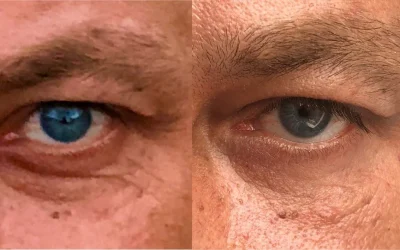Interview With Samsung SmartThings VP Jaeyeon Jung

Samsung’s acquisition of SmartThings in 2014 has made it one of the world’s leading platforms for connected devices. Now, it is integrating Matter as a controller to offer users a more seamless experience for controlling their devices.
In this interview with Fast Company, Samsung SmartThings VP Jaeyeon Jung explains what the future of the smart home holds and how Samsung is positioning itself to be a leader in the space. In this article, we will discuss about interview fastcompany jaeyeon galaxy smartthings December.
1. What is the future of the smart home?
The smart home is set to become a huge market in the coming years. Consumers are increasingly looking for smart home devices that offer convenience, comfort and security. They want to be able to control their homes from anywhere, using any device.
Many home owners are already familiar with devices like Amazon Alexa and Google Home, which help them to control their lighting, temperature, locks, entertainment systems and more. These devices can also be linked to other smart devices around the home, such as fridges and washing machines.
But there are still some issues to be addressed if the smart home is going to truly reach its potential. Those issues include cost, privacy and interoperability amongst devices and brands.
One solution is a new standard called Matter, which will allow all Matter-certified devices to communicate together regardless of brand. This will make it easier for consumers to build out their perfect smart home and make it more affordable.
The standard is being developed by the Connectivity Standards Alliance (CSA) and will be available to all smart home devices. It will allow devices from different manufacturers to communicate with each other, opening the door for a unified smart home ecosystem that makes it easier to add new features as they come out.
Samsung and Google are leading the charge, but other companies, including Ikea, are also joining the party. They have all signed up to the CSA to work on Matter.
It’s important for smart devices to work well with each other and the devices in their network, so that users can have a seamless experience. If you buy a smart lock for your house and then find out that it doesn’t work with your other smart home devices, that can be a big problem.
Another issue with smart home devices is that they can create a big database of information that hackers can use to break in and steal your personal data. This is why it’s essential to protect your phone and other devices from hackers before integrating them into the smart home ecosystem.
2. What is the future of Samsung?
The future of Samsung is based on a combination of a few things. Those include the company’s consistent investment in advanced technologies, such as AI, 5G, automotive and robotics, and innovative products centered around customer experiences.
To support this approach, CEO Lee Kun-hee made a series of strategic design reviews involving all the company’s senior executives. One of those initiatives was a redesign of the company’s internal design process. Another was the creation of an organization-wide design capability.
Rather than hiring designers from outside, Lee wanted to make sure that his company had an internal design team that could take the lead in creating products. He set up a design training program, taking in faculty members from a well-known art college.
By making these moves, he was able to build an internal design team that was capable of thinking differently than those at the competitors. This was a huge change for the company, which had traditionally been more focused on efficiency and engineering rigor than design.
This resulted in products that were not only more attractive, but also more affordable. Those features are what have kept Samsung products in high demand and helped the company achieve its growth goals.
For the next generation of Samsung devices, the company is making a major investment in developing a multi-device connection experience. The goal is to connect a variety of Samsung products to create a cohesive ecosystem that offers consumers a better overall user experience.
In addition, the company has joined RE100, a collaborative initiative to reduce indirect carbon emissions, and it is aiming to match its electric power needs with renewable energy by 2050. To ensure that it is on track to meet its targets, Samsung Electronics has already started to implement renewable energy sourcing methods at various facilities.
Water resource efficiency is also a priority. As domestic semiconductor manufacturing capacity expands, daily water withdrawals are expected to double from current levels by 2030. In an effort to minimize the impact on the environment, Samsung Electronics has committed to maximizing water reuse in its semiconductor operations.
3. What is the future of Samsung SmartThings?
A lot of smart home enthusiasts have a hard time getting started because of the complexities of different platforms, deciphering IoT protocols and finding a hub to connect everything. It’s one of the biggest pain points for newbies, which is why Samsung has created a new product that makes it easier to set up your smart home.
During the keynote at CES 2023, Samsung unveiled a device that does exactly that. It’s a smart hub packed into a wireless charger. The SmartThings Station looks a lot like the kind of charger you would get at your local office supply store, but it’s got a huge chunky charging puck that supports Matter and Thread to onboard devices to any Matter platform.
The new system also supports Zigbee to connect a large range of SmartThings-compatible devices, including TVs, speakers, and plugs. Low-power wireless radios are also supported, something that is critical for Matter technology.
In addition to the new Matter support, Samsung’s SmartThings app for iOS and Android is getting a pretty big update. It’s going to add a handful of features, such as multi-Window support and Android 13 compatibility.
It’s also adding support for Philips Hue Sync, which allows you to sync your smart lights so they dim and brighten with the content on your television. It will also introduce a Gentle wakeup routine, which will gradually brighten your lights to mimic the sunrise.
There are some other changes as well, such as support for the new Galaxy Z Fold 4 and Galaxy Z Flip 4. It will also be upgraded to Android 13 and support One UI 5.0.
Another feature is called SmartTag, which allows you to track things that are near you or within range of your smartphone. If you lose a piece of hardware, the tag will alert you to its presence.
This might seem like a minor feature, but it’s actually a pretty significant one. If you lose a pair of headphones or earbuds, for example, the tag will let you know where they are in case you need them again.
4. What is the future of Samsung SmartTag?
Samsung’s smart tags are an ideal accessory for anyone who wants extra peace of mind when it comes to keeping track of valuables. The tag uses a combination of Bluetooth and Ultra-Wide Band (UWB) technology to pinpoint its location, display its location on your phone and trigger an augmented reality feature when you get close enough.
The tag also has a button and hook, which you can use to attach it to your keys or other items that might get lost. And it has a ring that you can activate to let you know when your phone is nearby.
Like Apple’s AirTag, the SmartTag utilises the “Galaxy Find Network,” where nearby Galaxy phones can help you locate your lost items. It’s not quite as good as Tile’s system, however, which works with a huge community of other Tile users in the world.
Ultimately, it comes down to how much effort you put into finding your missing items. For starters, the more Samsung devices in your area that can detect the Galaxy Find Network, the better the odds of you locating it.
This means that in areas where there are a lot of Samsung phones, the likelihood of you getting a notification that a tag has been detected is high. In contrast, if you live in a rural area or in a country where Samsung has a low market share, you might struggle to find your lost item.
It’s also worth pointing out that, like other Bluetooth devices, the Galaxy SmartTag is only compatible with other Samsung phones running Android 8.0 or newer. That’s a bit of a misstep, as it means that it will only be able to find your things if you own a Samsung phone.
Despite those limitations, it’s hard to argue that the Galaxy SmartTag isn’t worth the money. It’s a small, discreet device that helps you keep track of your belongings, and the SmartThings app makes it easy to set up. Plus, if you’re already using Samsung’s SmartThings home automation platform, the tag’s button can start up your Philips Hue lights or other smart devices. If you need more information of interview fastcompany jaeyeon galaxy smartthings December just follow us.
Also Read: Interview Samsung Fastcompany Jung Smarttag Smartthings











